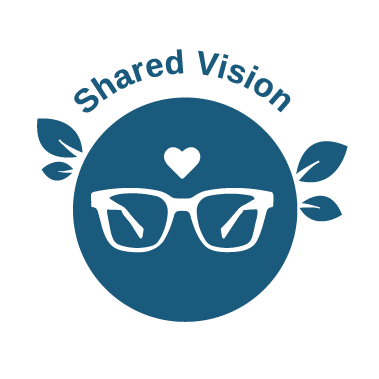How Shared Vision Contributes to Collective Impact

I often talk about getting our ducks in a row in the classroom and the need to create coherent, consistent instruction for our students. Today I’m going to share some ideas about getting those ducks in a row across classrooms. Our classrooms are not islands, and teachers don’t exist in isolation. Even in the one-teacher schools I’ve worked in, there was a need for connection and consistency in helping students achieve their potential.
One of the keys to this consistency is shared vision. Shared vision can be the difference between strategic, effective practice that results in growth for all students and a series of random acts of improvement that keep people busy but don’t really go anywhere. Without shared vision, each person is doing their own thing and running their own race. They are left alone to struggle through their problems of practice, deal with their own worries and recreate the wheel each and every time they want to teach something. This is a lonely and, very often, ineffective way of working. Shared vision, on the other hand, involves:
- All teachers knowing how to interpret and use school data to measure outcomes and inform teaching.
- A common understanding of what research indicates to be the most effective practice.
- A common understanding of the what, when, how, who and where instruction occurs.
- Alignment exists between individual values and beliefs and that of the school.
- All adults who work with children share in the vision for instruction.

How We Create Shared Vision
Creating shared vision isn’t a walk in the park. Leaders need to bring different people with different views and experiences onto the same page to row the boat in the same direction. Sometimes this means giving up a bit of individuality to work towards the bigger picture. Sometimes it means adjusting something that you felt was working just fine in your own classroom. This might sound unattractive to teachers who focus more on ‘my way of teaching’ rather than ‘our way of teaching’, but replacing that ‘my’ with ‘our’ pays huge dividends.

Conscious and consistent focus on the bigger picture
There is an enormous amount of satisfaction to be gained in working for and with something bigger than yourself. Being part of a team kicking goals in teaching is one of the most rewarding things we can do. When everyone focuses on the same big picture goals and purpose, everyone receives the group’s support. When you are having a tricky day, the team is there to prop you up. When you need a day off, the shared vision and the routines and practices that form that vision kick in, and your students can continue learning.
Open Environment
A shared, collaborative approach to teaching means that people can say what they mean and mean what they say. Discussion and questioning for continual improvement needs to be encouraged and respected. If someone brings up a point that is a bit uncomfortable, the members of the team need to be open to the discussion. It doesn’t mean the team changes their approach at the drop of a hat, but each person is supported on their journey to come to a shared vision with all their questions answered.

Willingness to Adopt a Consensus Approach
Shared vision doesn’t mean that every teacher loves every idea suggested. It does mean that your team commits to achieving consensus in decision making. For every decision made, team members have a voice and the opportunity to contribute to the changes made.
Thumbs up – I love it. Yes!
Thumbs to the side – It’s not my favourite, but I can live with it.
Thumbs down – Absolutely not. I can’t live with it.
Some important points to remember with this:
- Once you reach a consensus, that’s it. People can’t come back a week later and change their vote or close their classroom door and do their own thing. Shared vision is about rowing that boat together.
- Remember, open conversation and discussion are needed and encouraged. If someone (or a group) gives a thumbs down, then discussion follows. Remember too, that a shared vision is about working with the current evidence around instruction, so don’t worry that opening the door to discussion will see the team sliding back to a balanced literacy approach.

Shared, Collaborative, Effective PL
In order to develop shared vision, teachers need to be on the same page about what strong practices look like. But professional learning needs to go beyond the usual ‘spend a day in a room’ and return to school, forgetting everything you heard about. The best professional learning allows you to learn a bit, connect with your team and talk things over, having a go with things in the classroom and implementing new practices with the team’s support. It’s slower, sure, but in the end, it creates the strongest practice.

Shared vision is the glue that holds your practice together. Having it means that everyone in the team knows where they are, where they are going and that they’ll have the support of colleagues and systems along the journey.
Looking for professional learning for your team, done in your time and your way? Read more about the Evergreen Teacher here. 

 Jocelyn Seamer Education
Jocelyn Seamer Education
0 comments
Leave a comment